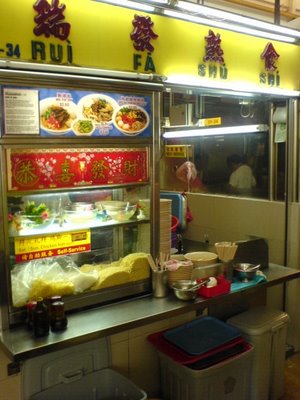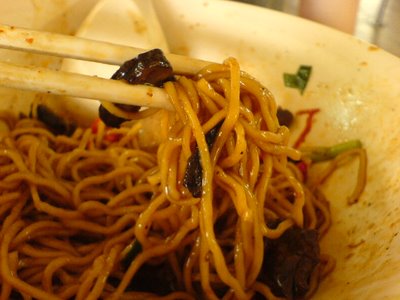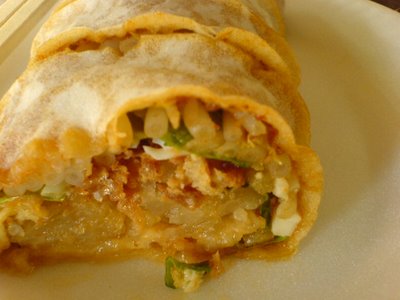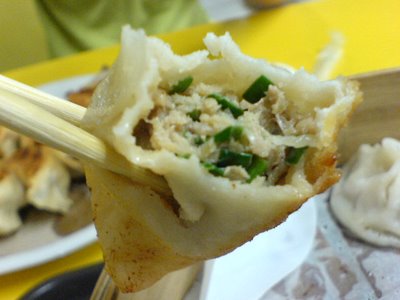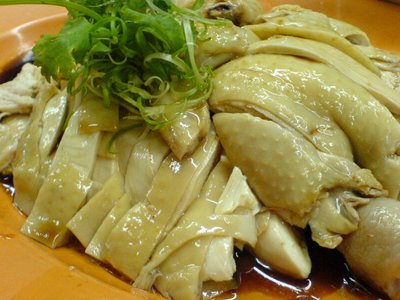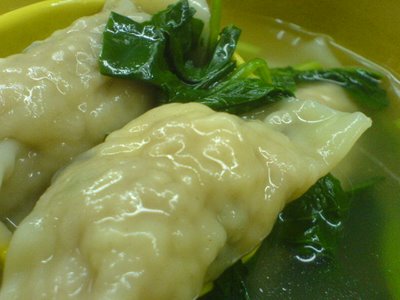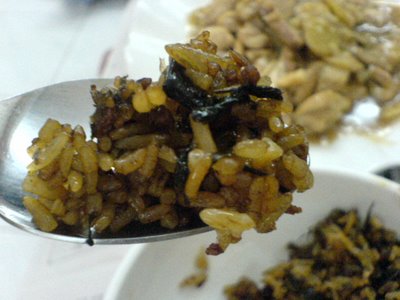
Sure, there are many styles and techniques of cooking out there and every nationality will have their own unique ways of whipping up a tasty meal. But what always amazed me is the chinese technique of stir-frying.
Growing up in a family where there are always yummilicious chinese food cooked fantastically by my mum, I guess it's only naturally that I've always been interested in cooking, chinese style of course. Not sure on how to go about doing it though, I'll just throw in the ingredients and start acting like a pro, trying to flip the food in the wok (and the outcomes weren't exactly ideal).
Well, it's only recently after I ate a super good beef hor fun at Quan Ji (Amoy St FC) that I tasted the
"wok hei", or breath of the wok as some may call it. Man, that subtle, slightly charred taste made me realise that there is much more to the technique of stir-frying.
For one, I didn't know that a high heat must be used with fast strokes and ingredients must be added separately. Hrmm, now that got me thinking.
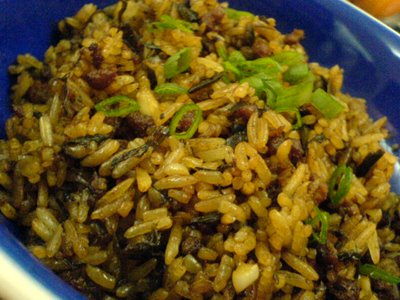
Anyways, I actually thought of this dish when I was lying in bed one night, thinking of how to enhance claypot olive rice served in Thai restaurants. By simply adding sweet black sauce minced pork (loved it when I was a kid) and frying the rice separately, and then adding olive leaves (can be bought in NTUC), you'll get a savoury and fragrant olive rice with a hint of chilli and sweetness from the pork.
Very well-received by Qin and her brothers.
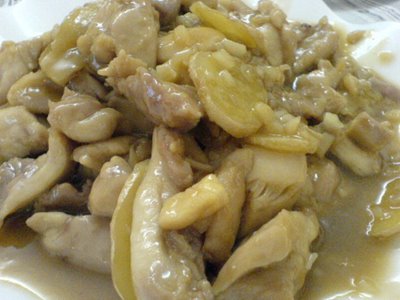
And then there's San Bei Chicken or Three Cups Chicken.
*Slurps* I especially love this kind of strongly flavoured dish such as Gong Bao Chicken etc. Apperently they named it this way because there's a cup of black sesame oil, a cup of soya sauce and a cup of rice wine used. Beware though, it's very heaty and cannot be eaten too often.
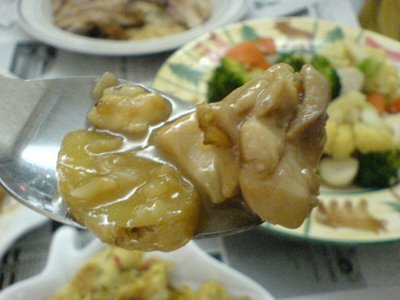
Woot! I loved the way it tasted! Btw, these pictures do NO JUSTICE to the taste of the dish and the QQness of the chicken. The black sesame oil and ginger did wonders.
Don't believe me? Just try it yourself.
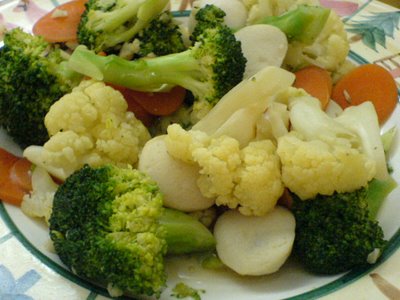
And just to throw in a vegetable dish for health's sake. As usual, the vegetables were too large. I'll take note to chop them up more finely in the future.
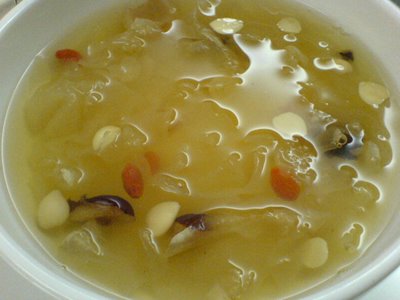
And last but not least, home-made Ching Tang boiled by Qin which ended our dinner nicely.
Recipe (San Bei Chicken):
Ingredients:
4 deboned chicken thigh (skin and fat removed)
1/4 black sesame oil, 1/4 cup soya sauce, 1/4 cup rice wine
1 1/2 tbsp sugar
2 heaping tbsp of garlic
1 portion of ginger thinly sliced.
Steps:
1. Marinate chicken with 1 tbsp soya sauce, 1 tspn cornstarch and 1 tbsp sugar for 1 hour.
2. Heat wok on medium high and add in sesame oil and ginger. Wait till slightly thickened.
3. Add in garlic and stir fry till the garlic releases it's fragrance.
4. Add in chicken and let it brown slightly before stir-frying briefly.
5. Add in sugar, soy sauce and rice wine stir-frying briefly.
6. Change heat to low and let simmer for 5-10 minutes.























